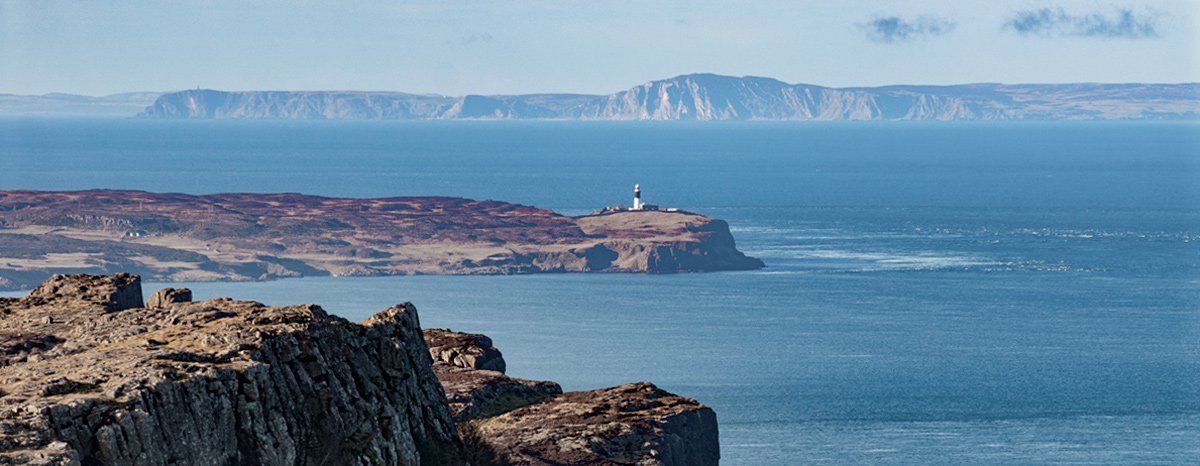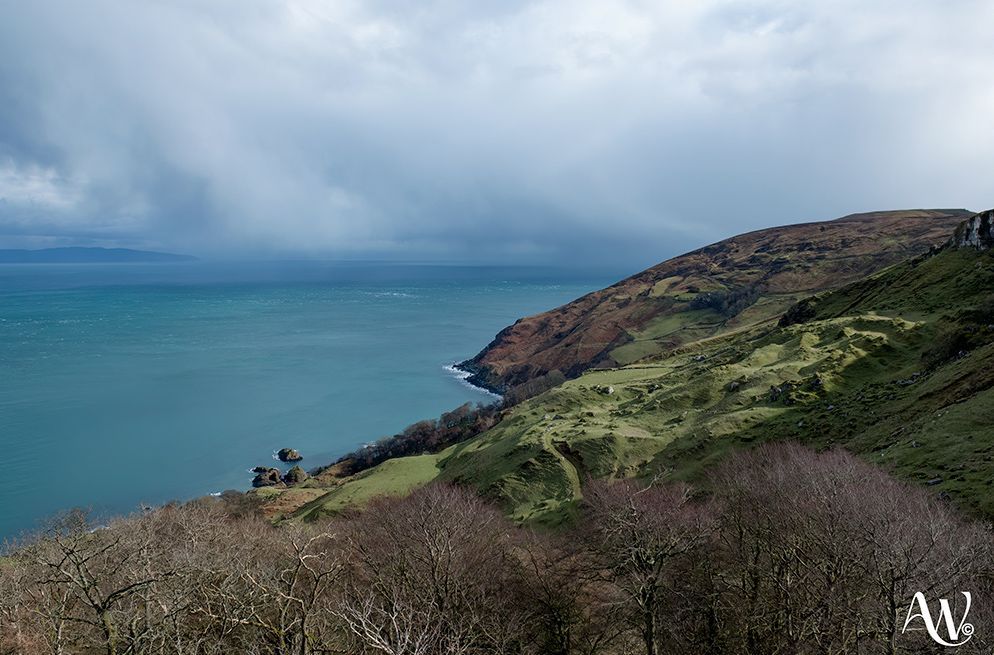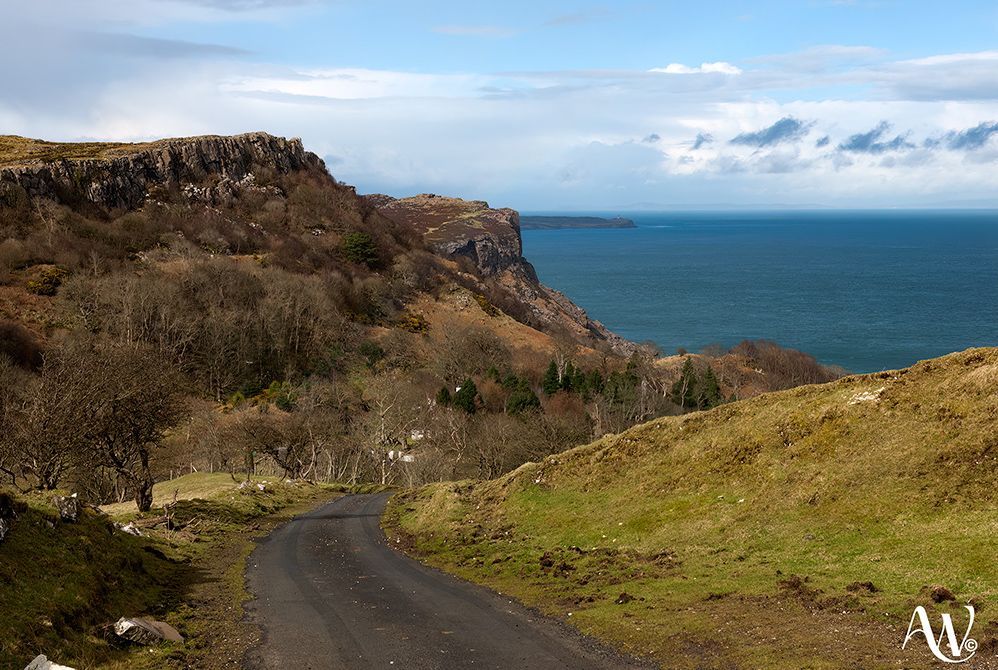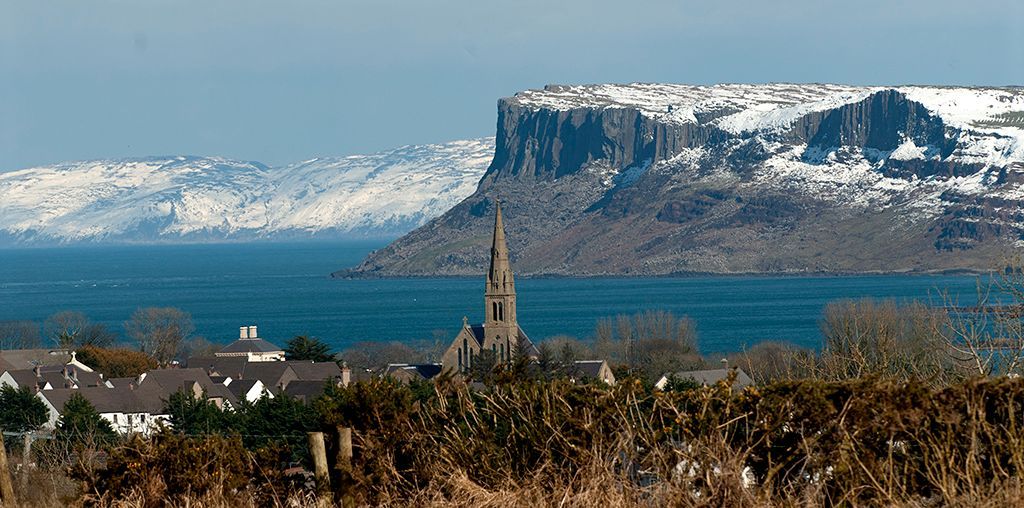A Murlough Connection - Roger Casement
I have always been fascinated by local history and finding out as much as I can about places I photograph as it just brings so much more to the experience. Murlough has one such story through it's connection with Roger Casement.

Roger Casement was born in Sandy Cove, Dublin in 1864, his parents were from both the Protestant (father) and Catholic (mother) faith, the family later moved to Belfast but tragically his parents both died when he was young and an Aunt raised him, he attended Ballymena Academy for part of his education. He would come to Ballycastle and stay with relatives here, one of his favourite locations was Murlough Bay which he refers to in a letter to his cousin Gertrude Bannister, while awaiting execution in Pentonville prison. He had been tried and convicted of treason, sabotage and espionage against the Crown and was hung at Pentonville on August 3rd, 1916 after losing his appeal. In the context of history, his story connects to many events that happened around our shores during WW1.
Roger Casement served a long and distinguished career in the British Foreign Service which he joined in 1882 and retired from due to ill health in 1912. During his career, he became British Consul for Mozambique (1895-98), Angola (1898-1900), Congo (1901-04) and Brazil (1906-11). He was internationally recognized for his Foreign Office work in exposing the exploitation of labour in the 'Congo Free State' by King Leopold of Belgium, the subsequent paper he published on the subject led to a restructuring of Belgium rule. Similar work with the Putamayo Indians in Peru led to him receiving a Knighthood from the Queen in 1911. How he came to be tried and hung for treason surrounds his involvement with the Irish Volunteers which he joined shortly after his retirement in 1912 - this led to him becoming involved with German high command officials and the events leading up to the 1916 Easter Uprising in Dublin.

Hostilities which had started in Europe in 1914 resulted in the issue of 'Home Rule' in Ireland being virtually shelved for the duration of the war - the Ulster Volunteer Force under the command of Sir George Richardson and the Ulster Unionist leader Edward Carson were instructed to join up and support Britain in its fight against Germany and likewise, John Redmond, the Nationalist leader, pledged his support for Britain in the war against Germany and urged the Irish Volunteers to join up and fight against the Hitler. The Irish Volunteers were under the Command of Eoin MacNeill who was born in Glenarm, this call amongst Nationalist led to a split in the Irish Volunteers. A group numbering around 10,000 under Eon MacNeill broke away from the estimated 200,000 membership. This breakaway group adhered to more hard-line principles and objectives and were opposed to support for Britain in any way.
Operating within the Irish Volunteers were a smaller group known as the Irish Republican Brotherhood, they had an inner army council whose members included Pearse, Plunkett, MacDiarmada, Ceantt and Clarke. They were planning the Easter uprising in secret without wider consultation. It is widely believed that the leadership of the Irish Volunteers were unaware of the full extent of the plans by the IRB that would eventually lead to the Easter uprising. Eoin MacNeill became aware of it shortly before the event and went along with it based on the knowledge that substantial support and arms were arriving from Germany. The IRB had devised an ambitious plan to involve Germany in their fight for Home Rule in Ireland through a guerilla campaign, at this time Ireland was a single identity under British rule and the government was based in Dublin - they hoped to persuade Germany into supplying arms and military officers to train the Irish Volunteers.

The Germans were not convinced by the overall plan or the ability of the IRB to undertake what they intended in Ireland, they also had doubts about captured Irish prisoners volunteering in substantial numbers to form an Irish Brigade to fight against Britain in Ireland. The skills of Casement as a diplomat were crucial in the negotiations and he used these to gain access and addressed hundreds of Irish prisoners in Limburg Lahn prison camp where he outlined the proposals of the Irish Republican Brotherhood. The Germans were cautious but realized the potential that an uprising in Ireland would have for their strategy with Britain, effectively opening a back door and another front of attack. Casement succeeded in securing a token gesture from the Germans of 20,000 guns, ten machine guns and several million rounds of ammunition, a fraction of the 200,000 guns requested - he also recruited around 60 prisoners from Limburg Lahn.

The arms were dispatched to County Kerry aboard the ' Libau', this ship was originally named the 'Castro' and had previously belonged to a Hull company before being captured by a German torpedo boat at the outbreak of the war, it was renamed the 'Libua' and docked at Hamburg. Captain Karl Spindler was selected for the mission and met in Berlin with Casement and his companions to learn the objectives of the voyage. The 'Libau' sailed from Hamburg to Luebeck where she was loaded with arms and disguised to the finest detail as a Norwegian merchant ship (sea charts, maps, logs, bed linen and even canned food), under cover of darkness her name was changed to 'Aud Norge' and 'Bergen' was painted on her stern as her home port, the crew were recruited from the German Navy and sworn to secrecy, they too were disguised as Norwegian merchant sailors.
Casement had misgivings about sailing on the 'Aud Norge' so the German officials arranged a submarine to take him, Robert Monteith and Sgt. Daniel Bailey (a POW recruited at Limburg Lahn) back to Ireland. U20 under the command of Capt. Schweiger (who had sunk the Lusitania off Kinsale on May 7th, 1915) had been scheduled to take them to Ireland where they planned to rendezvous with the 'Aud Norge' off Kerry and then board her and sail into Tralee harbour. U20, however, developed rudder problems and the assignment was handed over to Captain Weissbach and U19. Captain Weissbach had served under Captain Schweiger aboard U20 as a Torpedo Officer and was the man responsible for launching the torpedo that sank the Lusitania. Both were experienced submariners with excellent knowledge of the Irish coast. Captain Weissbach later commanded U80 and survived the war.

Flying the Norwegian flag, the 'Aud Norge' sailed around the north of Scotland and although seen by the Royal Navy they passed unchallenged through the blockade between the Faroe Islands and Iceland. After a stormy voyage which saw them sheltering off Rockall, they finally arrived and anchored off the rendezvous point of Inishtooskert, County Kerry. Failing to find any shore contact, Captain Spindler moved slowly into Tralee Bay and then back to Inishtooskert. They then had direct contact with the Royal Navy auxiliary ship HMS Shatter whose Captain came aboard the 'Aud Norge', they had a drink and brief chat but their presence did not on the surface appear to raise any concerns - British intelligence was said to have known of the plan in advance and perhaps this was a ploy, on the other hand, the description of the 'Aud Norge' had not reached the patrols off Ireland, who were on the lookout for a well-armed and much larger ship.
The 'Aud Norge' had arrived off Kerry with no radio and was waiting for land signals - the reason no contact was made is often attributed to the fact that three IRB men had drowned when their car crashed off the pier at Ballykissane, apparently on their way to make this vital contact. Spindler waited until his fear of arousing suspicion led him to move offshore again, he was then intercepted by HMS Bluebell who immediately ordered him to follow them into Queenstown (Cobh, Cork). Knowing the game was up Captain Spindler gave the order for a pre-arranged plan which would scuttle the 'Aud Norge'. Charges were set, the crew put on their German naval uniforms, the German ensign was hoisted and the charges detonated off Daunt's Rock, all the crew surrendered and the 'Aud Norge' complete with cargo went to the seabed.

U-19 on failing to find the 'Aud Norge' eventually landed Casement, Monteith and Bailey by dingy in Ballyheige Bay, two nautical miles from where they finally came ashore. The dingy had a rough time coming in, it drifted until it eventually overturned in the surf on Banna Strand, Tralee. Casement who had been ill for some time before and was too weak to travel or run took refuge in McKenna's Fort while Bailey and Monteith tried to make contact with the local IRB. A local Constable discovered Casement and he was arrested and shortly afterwards Monteith and Bailey were arrested. Casement was taken to London where he was subsequently tried and convicted of treason, sabotage and espionage against the Crown. His appeal was unsuccessful, and he was hung.
A petition had been made by many influential people in both England and the US including W. B. Yeats, George Bernard Shaw and Arthur Conon Doyle, on the grounds of his distinguished career. The timing of the trail and nature of the charges combined with the horrendous loss of British and Irish soldiers on the Western Front meant that public opinion was not in his favour, ever town in Ireland had lost young men both Catholic and Protestant. Before sentencing, copies of diaries appeared and were circulated, allegedly belonging to Casement they graphically recorded homosexual interactions. The authenticity of them is questionable and controversy still surrounds them today, some experts believe them to be forgeries planted in his belongings to discredit him, others believe them to be authentic.

During his interrogation Casement had asked to be allowed to make a public appeal for the Easter Uprising to be called off, this was refused. Inspector Parker who was present at the interrogation supported this by saying "Casement begged to be allowed to communicate with the leaders to try and stop the rising but he was not allowed'. On Easter Sunday he once again asked and was refused. This would indicate that the government wanted the uprising to go ahead so they could be seen by the public to act against a conspiracy between the Germans and Irish Nationalists. On hearing the news that the 'Aude Norge' had been scuttled and no weapons were coming ashore, Eoin MacNeill countermanded his force of 10,000 men which had the effect of confining the Easter Uprising to Dublin.
In 1965 Roger Casement's body was exhumed and returned to Dublin where it was interred in Glasnevin Cemetery, he is remembered locally for his involvement in founding the first Feis Na nGleann festival at Waterfoot in 1904, and chartering a ship to bring Raghery islanders to the festival. The submarine U19, after taking Roger Casement to Kerry would pass by Murlough Bay several times on active patrol under Capt. Johann Speiss. Records show that on On 25th February 1918 she sank the 5,383 ton Santa Maria off Lough Swilly, on 26th February 1918 she sank the 4,880 ton Tiberia off Black Head near Larne and on March 1st, 1918 sank the 17,500 ton HMS Calgarian off Rathlin Island.

